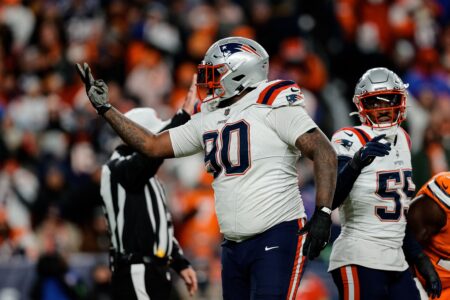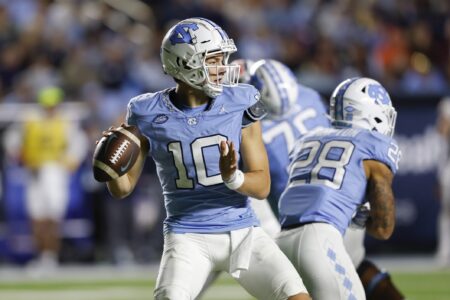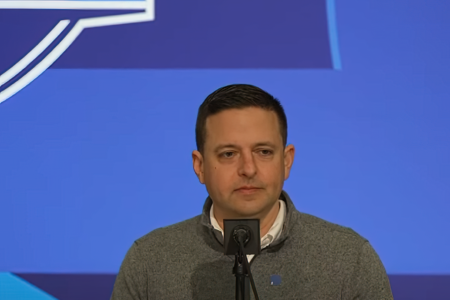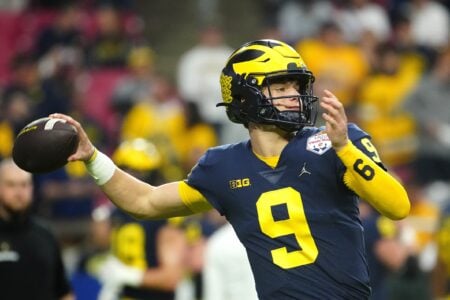I cannot find the previous thread where I included the math, so I will repost it here:
The ideal gas law talks about the relationship between temperature & pressure of a gas. A very simple example: if you blow up birthday balloons at the grocery store at 75 °F and then take them outside to your car at 32 °F, they will shrivel up noticeably! You likely have done that “experiment” if you have ever lived up North. Then when you take them home they will fill out again as they warm up. There are many YouTube videos showing this effect, and here is one:
While many people have posted the gas law calculations related to deflategate on the internet, most have been
wrong in that they confused absolute pressure with relative pressure (also called “gauge pressure”). Absolute pressure takes barometric pressure into account. Gauge pressure is the reading on the inflator, which is the pressure on inside of the football relative to the pressure on outside of the football (which is the pressure of the air you breathe).
The ideal gas law says that PV = nRT, where P is absolute pressure, V is volume, T is temperature.
Let’s consider two gas-filled objects: 1) the football as it begins the game; and 2) the football at halftime. The ideal gas law can be modeled for two objects,1 and 2: P1V1 = nRT1 and P2V2 = nRT2.
Solving for Volume V in each case: V1 = nRT1/P1 and V2 = nRT2/P2
Now we will assume that V1 = V2; that is, let’s assume that the volume of the football will not change during the game (
it doesn’t either shrink or swell up); therefore; nRT1/P1 = nRT2/P2;
Dividing each side by the constants n and R; leaves:
T1/P1 = T2/P2
All that we need to do is solve for P2: Since T1/P1 = T2/P2; thereciprocal is true and P1/T1 = P2/T2.
Multiplying both sides by T2 solves for P2:
P2 = P1T2/T1
Now let‘s determine the predicted value of the final absolute pressure (P2) in a football! We know that:
A) T1 = initial temperature where the football was inflated (indoors, presumably) = room temperature,
likely equals 72 °F = 22.22 °C = 295.37 Kelvin (Kelvin is the “absolute temperature scale”)
B) T2 = final temperature = the gametime temperature (the published value at kickoff) = 51 °F = 10.56 °C = 283.71 Kelvin
C) P1 = starting absolute pressure, equals relative pressure
plus atmospheric pressure, and since the reported atmospheric pressure at the time point nearest kickoff time, as reported by Weather Underground, was 29.75 in, or 14.61 psi, at 6:53 PM; P1 = 12.50 psi + 14.61 psi = 27.11 psi = the absolute pressure of the football when it was checked before the game.
Plugging in the actual values for the known quantities P1, T1 and T2 into our formula:
P2 = (27.11) x (283.71) / (295.37) = 26.04 = the absolute pressure of the football at halftime.
Gauge pressure = (absolute pressure – atmospheric pressure) = 26.04 – 14.70 = 11.34 psi. That would be the gauge pressure reading at halftime! The drop in relative pressure P2 – P1 during the first half equals 12.50 – 11.34 =
1.16 psi.
Plain English: By the ideal gas law, a football inflated to 12.5 psi at 72° F and cooled to 51 °F will have a final pressure of 11.34 psi, thus showing a pressure loss of 1.16 psi.
The Carnegie Mellon Experiments on the web, Finding #1: These researchers found that footballs inflated in the lab to 12.50 psi at 75 °F and then cooled to 50 °F had a final pressure of 11.4 psi, a loss of
1.1 psi (summarized in the pdf document at
http://www.headsmartlabs.com/ )
Conclusion #1: This experiment seems to match the ideal gas law prediction above rather closely. Note that they used a slightly larger temperature drop in their experiment, 25° (75 °F to 50 °F), not the 21 °F drop that I used. We do not know room temperature in the referee’s room, though, anyway.
Carnegie Mellon Experiments, Finding #2: These researchers found that footballs inflated to 12.50 psi at 75 °F and cooled to 50 °F that were then
soaked in water had a final pressure of 10.7 psi, a loss of 1.8 psi.
Conclusion #2: A second factor, the expansion of a football as it gets wet, also leads to a drop in psi, they suggest. This factor contributes another 0.7 psi in pressure drop. This in essence shows that the “constant volume assumption” of the ideal gas law is not fully valid: a football swells up just a little as it becomes water-soaked.
One important caveat on the Carnegie Mellon Experiment #2: In this experiment they dunked the new footballs completely in a tub of water for awhile. Is that analogous to a heavy rain, or is it overkill? That criticism concerns me a bit. The real world effect of a heavy rain is probably somewhere between their dry football result (1.1 psi) and the soaked football result (1.8 psi).
To err on the side of caution, I have chosen to ignore the water effect for now and go with the dry football experimental result: a 1.1 psi drop at Carnegie Mellon, in general agreement with the 1.16 psi calculated result that I obtained, which also doesn’t take football wetness into account.
Plain English ultimate conclusion for the Patriots footballs: It would be reasonable to expect, based on both experimental results and ideal gas law calculations, for a pressure drop of at least 1.1 psi to have occurred within the Patriots footballs in the first half of the AFCCG, based on the known game time conditions and the observation that the footballs were (likely) inflated to 12.5 psi (gauge pressure) at room temperature (72°F).
Aha though- what about the Colts footballs? We don’t know their initial pressure, unfortunately, but if we assume that they were at the maximum legal pressure of 13.5 psi gauge pressure (since they apparently
knew that football pressure loss would be monitored), we can calculate the expected pressure drop.
T1 = 295.37 Kelvin, as before (unless of course, their footballs were
colder when they were inspected);
T2 = 283.71 Kelvin, as before;
P1 =
absolute pressure at the onset = 13.50 psi + 14.61 psi = 28.11 psi
Thus P2 = (28.11) x (283.71) / (295.37) = 27.00
And the gauge pressure at halftime should have been 27.00 – 14.70 = 12.30 psi.
Thus the Colts footballs should have been at a final pressure of 12.3 psi if they started at 13.5 psi and at 72 °C. The legal lower limit is 12.5 psi. The Colts footballs should have measured low in pressure at halftime, but only by 0.2 psi.
Question: Would a referee call a reading of 12.3 rather than 12.5 clearly out of specifications and illegal? How about 12.4 rather than 12.5, or 13.6 rather than 13.5?
Maybe yes, maybe no. It certainly depends on both the accuracy and precision of the pressure gauge. A digital readout (the kind most often used today) often shows significant drift/fluctuation in the last digit. If in real time the referee saw values pop up such as these: 12.3, 12.4, 12.5, 12.4, 12.3, 12.4; he might say: It looks to be about 12.5;
good enough! Similarly at the beginning, if he saw in real time 13.6, 13.5, 13.6, 13.5, 13.6; he might say: It looks to be about 13.5,
good enough! He could instead say, for example, “It looks more like 13.6, which is illegal” and “It looks more like 12.4, which is illegal”, of course.
But is he really likely to be that confident in trusting that shaky last digit on the pressure gauge, confident enough to call something illegal? That would be like the cop who writes you up for going 71 mph in a 70 mph zone. He probably doesn’t think that 1 mph is a big deal. The referee probably doesn’t think that being 0.1 psi off specs is a big deal, as he checks as many as 60 footballs in about 15 minutes (24 from each team & 12 kicking balls).
Do we know that the Colts footballs were at 72 °C when they were tested pre-game? No. If they were colder for some reason (maybe they had just come off of an equipment truck 30 minutes before?) the pressure drop during the game would have been
less, since they would have cooled down less to reach 51 °F by halftime.
Final conclusion: It is not unreasonable to assume that the Patriots footballs would fail the inspection and the Colts footballs would (barely) pass, based upon logical assumptions of inflation levels and inflation temperatures in concert with the issues of temperature-related gas expansion and the human-element (the referee deciding that he is not confident in calling something illegal that appears to be off by only 0.1 or 0.2 psi).
















